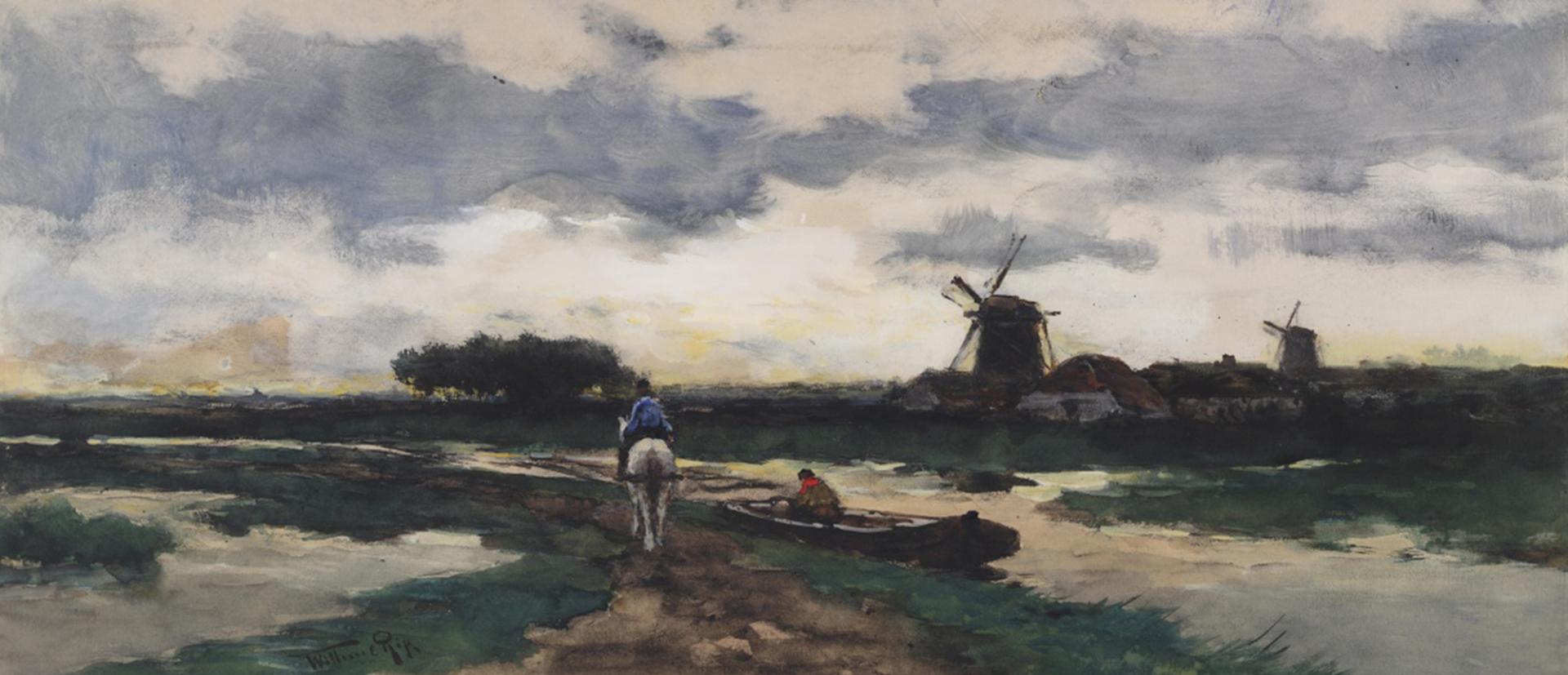Willem Rip Archive

Recently, the RKD – Netherlands Institute for Art History came into possession of a modest archive on the Dutch landscape painter Willem Cornelis Rip (1856-1922). It is a varied assortment that belonged to his descendants, consisting of exhibition catalogues, some photographs of works, price lists, a few notes and the recollections of his daughter.
Reputation abroad
‘Dear Mr Wallis, […] you had some of my pictures and drawings in stock […]. I suppose that this stock will now be exhausted. Therefore I propose you to send you some of my best watercolours or pictures to select from and hope you can use some of them,’ Willem Rip wrote to British art dealer Harry Wallis (1871-1949). In 1910, Wallis had succeeded his father as managing director of ‘The French Gallery’, a well-known London-based art gallery, which had been dealing in contemporary French as well as Dutch art since the nineteenth century. The fact that Willem Rip quite boldly offered a number of new works to the London dealer is indicative of the reputation of this nowadays largely forgotten artist. Rip regularly exhibited abroad. He was, for instance, quite successful at the World Exhibitions in Paris (1889 and 1900), Saint Louis (1904) and Buenos Aires (1909). The archive also contains a catalogue from 1903 of an extensive solo exhibition in ‘The Holland Fine Art Gallery’ in London. Tucked away between its pages are reviews from English newspapers he had translated into Dutch.

2. Items from the Willem C. Rip Archive
3. Willem Rip, The hunter - evening mood, before 1922, collection Teylers Museum, Haarlem
Cloudy skies
Willem Rip was born in Rotterdam and was trained at the Academie voor Beeldende Kunsten en Technische Wetenschappen (Academy of Visual Arts and Technical Sciences), and by Robert van Eijsden. A Royal Grant enabled him to study in Munich in 1879 with historical painter Karl Piloty (1824-1886), whose influence on Rip’s art was negligible. The subsequent journey through Bavaria, Tirol and Italy wet his appetite for painting plein air studies, but his true passion was for Dutch landscapes with their cloudy skies – the image of Holland which was also popular with collectors abroad. This popularity becomes particularly apparent from a note written by Rip shortly after the First World War to the aforementioned Harry Wallis. The art dealer had commissioned fourteen water colours and three paintings from him, but apparently complained about the price point of these. Rip wrote to him: “You consider my prices steeper than before, but my work is getting better paid [...]. The Americans are starting to buy again as well and are paying increasingly higher prices.”
The Hague School
Meanwhile, Willem Rip had gone back to live in The Hague, where he was a member of both the artists’ association Pulchri Studio and the Hague Art Circle (Haagse Kunstkring). He belonged to the group of artists who, inspired by the works of painters of the Hague School, successfully created similar works for the international market. In a number of contemporary photographs of his paintings in the archive, echoes of predecessors like J.H. Weissenbruch, Jacob Maris and P.J.C. Gabriël can be discerned. These predecessors appreciated him as well. ‘Mesdag and Joseph Israels often visited him in his studio. They were interested in his work’, Rip’s daughter remembers in her hand-written recollections of her father. Mesdag bought a number of paintings for his collection. And he was in good company, as Queen Wilhelmina and Queen Regent Emma also owned works by Willem Rip.
Although the modest archive only contains a few random fragments from Willem Rip’s career, it is definitely a meaningful acquisition. The RKD’s collection already contains a number of letters by Willem Rip in his capacity of exhibition committee member of the Pulchri Studio artists’ association in The Hague. Collectively, these pieces present a fair image of this successful disciple of the Hague School.

2. Invitation to exhibition in Kunstzaal van Delden, Amsterdam, collection RKD, Willem C. Rip Archive
3. Recollections from H. Berckenkamp-Rip of her father, written in 1984, collection RKD, Willem C. Rip Archive